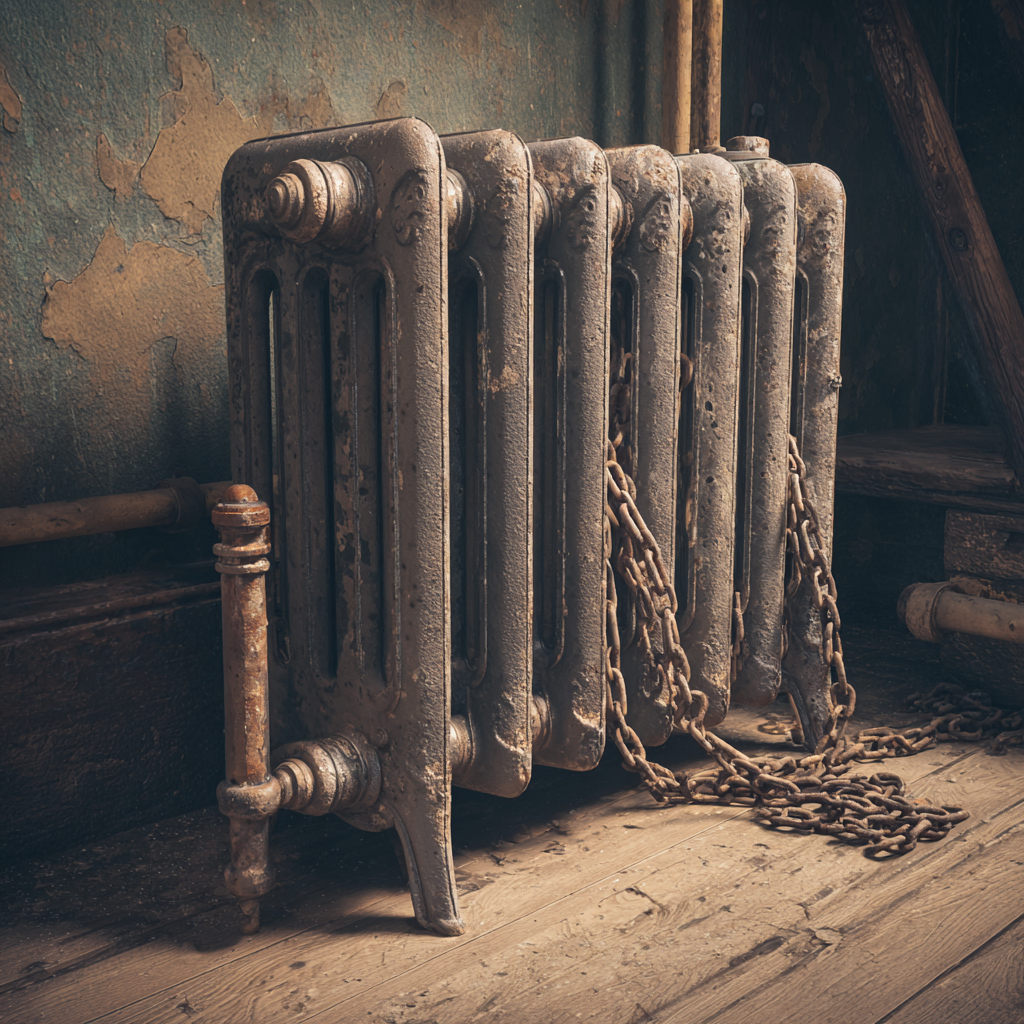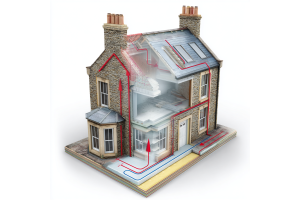
Tips for Preventing Rust, Corrosion & Efficiency Loss
Radiators are central to your home’s warmth and comfort, and like any mechanical component, they perform best with regular care. The good news is: simple maintenance steps now can prevent costly repairs, prolong the life of your radiator, keep heat output high, and help your heating system run more efficiently. Below is a comprehensive guide to radiator maintenance, geared for homeowners, renovators, and heating enthusiasts.
Why Maintenance Matters: Risks, Costs & Efficiency
Before diving into the “how,” it’s helpful to understand why radiator maintenance is crucial:
-
Corrosion & rust gradually eats away metal surfaces—inside and out—eventually causing leaks or structural weakening.
-
Sludge, debris, and scale deposit inside the radiator’s internal channels, reducing water flow, causing cold spots, and making the system work harder.
-
Air trapped in radiators causes parts of the radiator to stay cool (especially near the top) and increases inefficiency.
-
Surface damage and scratches can accelerate external rust formation if the protective coating is compromised.
-
A poorly maintained radiator increases the load on your boiler or heat source, leading to higher energy bills and possibly a shortened lifespan of the system.
Taken together, maintenance is not optional — it’s essential for preserving performance, reducing cost, and prolonging system life.
Basic Maintenance Tasks: The Regular Checks (Monthly / Seasonal)
These are the tasks you can carry out yourself without specialist tools. Doing them regularly keeps big issues at bay.
| Task | Frequency | How to Do It | Why It Matters |
|---|---|---|---|
| Dust / debris cleaning | Monthly (or before heating season) | Turn off heating; use vacuum cleaner or soft brush to remove dust from in, around, and under radiator. You can use a hairdryer to blow dust from tight gaps. Then wipe outer surfaces with a damp cloth and dry thoroughly. | Dust acts as insulation, blocking heat radiation, reducing output and efficiency |
| Check for cold spots | Monthly / when heating runs | Feel the radiator surface when it's hot. A cold zone, especially near the top, suggests trapped air or obstruction. | Early detection helps you bleed or flush before bigger damage |
| Bleed radiators | Beginning of heating season / if cold spots appear | Turn off heating and wait for radiator to cool. Place a towel beneath the bleed valve. Use a radiator key (or screwdriver) to open the valve slightly; you’ll hear a hiss of air. When water starts to flow, close the valve. | Releases trapped air so full surface heats; prevents inefficiency |
| Inspect valves, joints & connections | Seasonally | Visually inspect valve bodies, connections, and pipe joints for signs of damp, corrosion, or leaks | Early detection of drips or failure prevents water damage and rust |
| Check system water pressure | Seasonally (or after bleeding many rads) | On your boiler or system gauge, ensure pressure stays in recommended range (e.g. 1–1.5 bar for many systems). If low, top up the system water per boiler manual. | Low pressure can reduce flow, weaken heating; too high may stress components |
These tasks, done routinely, form the first defense against damage.
Advanced Maintenance & Preventative Measures
Beyond the basics, there are more involved steps and system-level strategies to preserve radiator health.
1. Use Corrosion Inhibitors & Maintain Water Chemistry
Radiator water is not just water — it carries metals, ions, and oxygen, all of which promote corrosion. Adding the right inhibitor helps protect the whole system.
-
Corrosion inhibitors (chemical additives) slow down rust and scale formation. They need to be compatible with metals in your system (steel, copper, brass).
-
Over time, inhibitors degrade or become depleted, so annual re-dosing or testing is wise.
-
Maintaining a balanced pH in the system water (~6 to 8.5, depending on metals) helps reduce aggressive corrosion.
2. System Flushing (Power Flush / Chemical Flush)
When sludge, rust particles, and debris accumulate, flushing the system can restore performance.
-
A power flush is done by a professional: the boiler is shut off, system drained, a chemical cleaning fluid is circulated at controlled pressure, and then the system is refilled and inhibitor added.
-
Some milder chemical flush kits exist for homeowner use (check compatibility), but professional flushing is more thorough.
-
Frequency depends on system age and condition—often every 5–10 years in established systems.
3. Install Magnetic or Debris Filters / Strainers
Magnetic filters or sludge traps capture metal particles and prevent them circulating into radiators, reducing wear and blockage.
-
These trap sludge and ferric particles before they reach radiators or boiler internals.
-
Installing one in the return pipe is good practice in modern central heating systems.
4. Touch Up & Protective Coatings
If your radiator’s paint or coating is chipped, the exposed metal is vulnerable to oxidation.
-
Gently remove rust or flaking paint with fine sandpaper or Scotch-Brite pad.
-
Apply a primer suitable for metal, then a radiator-safe paint in matching finish. t
-
Avoid harsh chemicals or abrasives as they can accelerate corrosion.
5. Control Moisture & Humidity Around Radiators
Moisture (condensation) significantly accelerates external rust.
-
In high-humidity areas (bathrooms, kitchens), ensure good ventilation (extractor fans, opening windows).
-
Avoid drying wet clothes on radiators — the condensation dripping can damage surfaces.
-
Wipe off any condensation or liquids on radiator surfaces promptly and dry them.
-
Use dehumidifiers if a room is especially damp.
6. Avoid Material Mismatch & Electrochemical Corrosion
Using mixed metals (steel radiators, copper pipes, brass valves) can create galvanic corrosion if the electrolyte (water) bridges metals.
-
Ensure you use compatible metals, or isolate dissimilar metals with dielectric fittings or insulation.
-
Avoid replenishing system water frequently from mains — mains water introduces fresh oxygen and ions that increase corrosion.
-
Closed pressurised systems (not open vented) help reduce oxygen ingress.
How to Deal with Rust or Damage You Already Have
If your radiator shows signs of rust or damage, here’s how to tackle it:
External Rust / Surface Corrosion
-
Gentle cleaning: use warm soapy water and a soft sponge. Avoid abrasive tools.
-
Vinegar or baking soda paste: apply to rust spots, let sit, then gently scrub and rinse.
-
Tin foil trick: dip foil in water or vinegar and gently rub off surface rust.
-
After cleaning, ensure drying and reapply protective paint or coating.
-
For chrome or decorative radiators, go very gently with rust removal — surface damage or pitting can be visible.
Internal Corrosion / Sludge Indications
Indicators of internal damage include:
-
Radiator leaking from chassis (not just from joints).
-
Sections of the radiator remain cold even when central heating is on fully.
-
When bleeding, water that comes out is dark or muddy, not clear.
If internal corrosion is suspected:
-
Consider a full system flush.
-
Replace severely damaged radiators.
-
Add or check magnetic filters, inhibitors, and ensure proper water chemistry.
-
Evaluate whether the boiler or system has suffered stress because of sludge impact.
Tips to Maximize Radiator Performance & Efficiency
Beyond cleaning and corrosion prevention, use these operational habits to keep your radiators efficient and long-lived:
-
Leave clearance around radiators — avoid placing furniture or blocking flow (leave ~10 cm clearance) to maintain circulation.
-
Avoid overdrying or overheating — using high settings excessively may stress radiator surfaces, coatings, or valves.
-
Use thermostatic radiator valves (TRVs) — regulates room temperature and reduces wear on radiator surfaces.
-
Maintain balanced system flow — ensure all radiators heat evenly; imbalance forces some radiators to work harder.
-
Schedule periodic professional inspection — every few years, have a heating engineer check system integrity, flush where necessary, inspect joints and valves.
-
Record maintenance history — note dates of flushed, inhibitor added, paint touch-ups, leaks — helps track aging and plan replacements.
When to Replace Rather than Repair
At a certain point, repair or maintenance is no longer sufficient, and replacement is smarter.
Signs it's time to replace:
-
Radiator body shows extensive rust, pitting, or thinning metal.
-
Repeated leaks or failure in welded seams.
-
After flushing and maintenance, performance remains poor (cold zones, low heat).
-
The radiator design no longer meets flow temperature or design requirements (e.g., in low-temperature heating or heat pump systems).
-
Cost of repair, coating, or refurbishment exceeds cost of a new high-efficiency model.
When replacing, select a radiator that fits your heating system’s requirements (output capacity, flow/return temperature, material, corrosion resistance) — Geyser’s designer, high-quality radiators are ideal candidates for long-term replacement.
Radiator Maintenance Checklist (Summary)
Here’s a consolidated checklist you can print or follow:
Monthly / Seasonal:
-
Clean dust from radiator surfaces and behind fins
-
Check for cold spots
-
Bleed radiators if needed
-
Inspect valves and joints for damp or corrosion
-
Check system pressure
Annually / Every Few Years:
-
Add or refresh corrosion inhibitor
-
Flush or power flush the system (as needed)
-
Install or service magnetic filters
-
Touch up paint coatings, repair surface blemishes
-
Professional inspection of boiler, pipes, and radiator network
As Needed:
-
Address external rust spots immediately
-
Replace radiators that are beyond repair
-
Rebalance flow if some radiators heat unevenly
-
Monitor for new leaks or signs of sludging
Why This Matters for Geyser & Its Customers
For Geyser, the quality of our radiators is a strength — but long-term satisfaction depends on maintenance. Clients who follow these practices preserve:
-
The appearance of designer radiators
-
Heat output and performance
-
Warranty validity (many warranties require maintenance)
-
System efficiency and lower running costs
-
The overall lifespan of the radiator and heating network
In content or product pages, you can link these maintenance tips to your range of corrosion-resistant radiator models, quality finishes, matching touch-up paints, filters/inhibitors, and replacement products.
Conclusion
Radiator maintenance is not a worry reserved for old, leaky systems — even the best radiators benefit from periodic care. By cleaning out dust, bleeding trapped air, controlling corrosion internally, and promptly addressing surface damage, you can extend your radiator’s working life, preserve efficiency, and avoid costly breakdowns.







